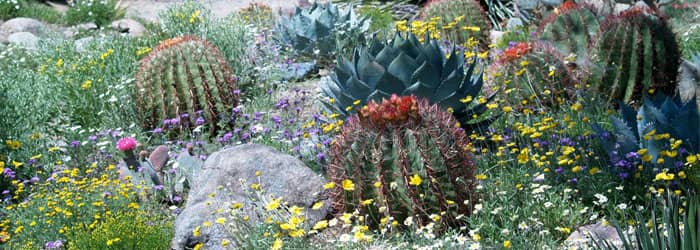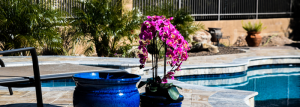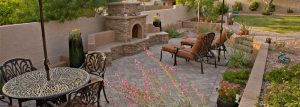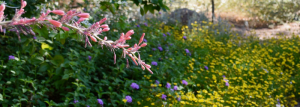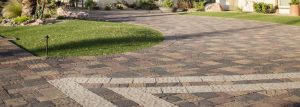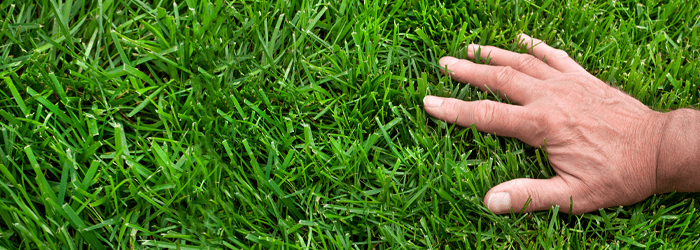SUSTAINABLE BACKYARD LANDSCAPING
When designing the perfect Arizona backyard, most people want something that not only looks great and doesn’t require too much maintenance, but they also want to include plants and hardscaping that will last for a long time and won’t waste water. Those are great goals that make sense for the environment as well as for making our own lives easier.

One popular way of describing all that needs to go into the perfect Arizona backyard would be with the word “sustainable”; often used by people aiming for a lifestyle that won’t damage the natural world around them. Here are five ways that you can add to the sustainable quality of your yard:
1 | Design a desert-style landscape that features xeriscaping.
Xeriscaping means using lots of native plants or desert-adapted plants, according to the Arizona Municipal Water Users Association. Even so you can still install some grass lawn for pets or children to enjoy. Sustainability of landscaping can also mean that you avoid excessive pruning. Allow those desert plants to grow naturally, and it will save money and back-breaking work. Avoiding tropical plants like palms means you do less irrigation and fertilizing.
2 | Plant several shade trees, preferably native species.

In tree-shaded neighborhoods, the summer daytime air temperature can be up to 6 degrees cooler than in treeless areas, according to the U.S. Department of Energy. The department also notes that trees can reduce heat radiation and cool the air before it reaches your home’s walls and windows. Many trees that do best in Phoenix and Tucson are native mesquites and palo verde trees that only grow to a height of 30 feet or so. But you can find taller trees that grow well in the desert, including ash, elm, pistache and oak.
3 | Install permeable pavers as part of your yard’s hardscape.
We’ve always advocated using concrete pavers in your yard as a way of reducing maintenance and repairs. And you may have thought that those pavers were also “permeable.” In other words, the irrigation and rain water soaked through them and the sand around them and thus helped to irrigate your yard and replenish the water supply as a whole.
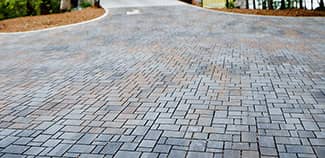
But that’s not exactly the case. Permeable pavers look the same as concrete pavers but usually have a larger spacer bar on the sides to allow for clean angular rock to be used in the joints between pavers rather than sand, as is the case with concrete pavers. Generally, what is called “voided rock” is also used as a base under the pavers. (Voiding means washing and cleaning the rock before installation.)
Greater use of these types of pavers will allow cleaner rainwater to recharge the water table in Arizona as done in the past.
Few homeowners consider this type of paver and its advantages, according to Nathan Angel, sales manager for the paving manufacturer, Belgard. Cost may be an issue as installing permeable pavers means that a paver job could cost from 25 to 30 percent more than concrete pavers do. However, using permeable pavers also means that a homeowner can install an underground tank to collect the rainwater for future use.
Angel says that Arizona State University is installing permeable pavers at some of its projects; these pavers are used in commercial projects as well. But they are widely available for homeowners, too.
4 | Do more drip irrigation and do less sprinkling for the plants in your yard.
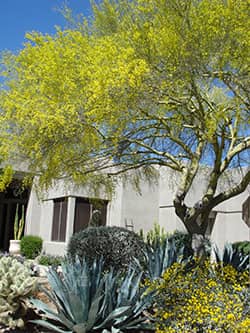
The Arizona Municipal Water Users Association recommends putting trees, shrubs, groundcovers and turf areas on different valves so you can time various kinds of irrigation differently. Most plants need more water during their first year in the ground. After that, you can cut back on the water. Trees generally benefit from longer and slower irrigation that will give their roots deep watering in the desert. Deep watering is what enables citrus and other types of trees to bear good crops of fruit.
You’ll also want to reschedule your irrigation depending on the season of the year. Be sure to turn off the system as well after a big rainfall.
5 | Put gutters on your house to protect your home’s foundations and to help irrigate your yard.
Most Arizona homes are built without gutters because of our low rainfall, but they can definitely provide help in making better use of that rainfall.
When gutters are installed, you also need to move water as far away as possible from the house. Ideally, water should run off the roof into gutters, then through downspouts and hard pipes that drain a minimum of 10 feet away from your home.
Another Tip:
Use landscaping materials that let water penetrate the soil. Do not use plastic under crushed granite that surrounds your plants. Permeable paving blocks work well to keep water running into the soil.
###
Photo Credits:

